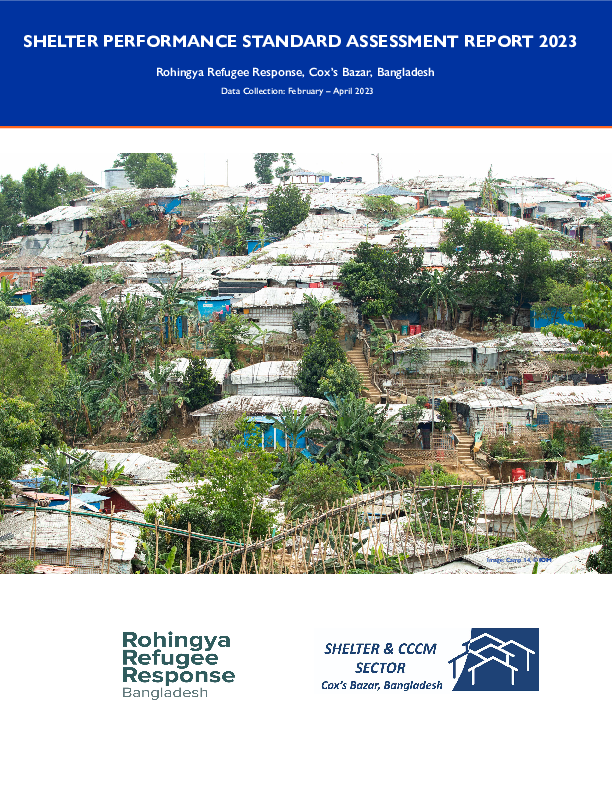-
Countries
-
Data and Analysis
-
Special Focus
-
Crisis Responses
Bangladesh — Shelter Performance Standard Assessment Report 2023

Contacter
NPM Bangladesh, npmbangladesh@iom.int
Langue
English
Emplacement
Bangladesh
Période couverte
Mar 01 2022
Feb 28 2023
Activité
- Survey
- Community Perception
The total number of Rohingya refugees in Cox’s Bazar and and Bhasan char is around 961,729 individuals . A high majority of the Rohingya refugee population is concentrated in 33 extremely congested camps within Ukhiya and Teknaf Upazilas of Cox’s Bazar district, Bangladesh. The refugees are dependent on the assistance provided by the humanitarian community and the government of Bangladesh. In the camps, shelters are exposed to cyclic monsoons and face risk of floods, landslides, fire and cyclones. Temporary materials such as bamboo and tarpaulin have a limited capacity to resist weather impacts, and thus require regular repairs and replacement. Use of adequate material (treated bamboo, good quality tarpaulin) along with the design, site plan, proper technical details for the materials connections, can improve lifespan of materials if properly followed. Training for the beneficiaries on how to repair and maintain their shelters is also one of the essential elements of shelter assistance to ensure less dependency on humanitarian support. The SCCCM sector and its partners established Shelter Performance Standards in 2019 to set up a standard for shelter quality and have consistent guidelines to be followed over time. In order to determine if the surveyed shelters fulfill the minimum or desired standards as well as HHs perceptions on other housing-related issues, since 2021 NPM (Needs and Population Monitoring) has been conducting Shelter Performance Standard Assessment and producing the report in collaboration with the SCCCM sector. The below document represents findings from the assessment conducted by NPM on the Shelter Performance Standards 2023 which reflect shelters conditions across 33 camps. NPM in coordination with the SCCCM sector conducted similar studies in 2022 and 2021.
